Brinson Prize Fellowships are awarded to early-career observational cosmologists who are committed to chasing bold ideas with creative, nimble, and innovative research.
Brinson Prize Fellowships support research in observational cosmology. Projects often complement and capitalize on space science, and include topics such as the first stars, the cosmic distance scale, galaxy formation, and dark matter.
In 2023, The Brinson Foundation began collaborating with the Space Telescope Science Institute (STScI) to broaden community access to the Brinson Prize Fellowship Program. Fellowship conditions are set by The Brinson Foundation, which administers the program, and STScI provides logistical assistance. Each award provides up to three years of competitive support for salary and independent research. Selected Fellows request their institutional affiliation from a list of 10 participating institutions.
The Foundation recognizes the importance and value of connecting science and society to maximize understanding and impact. It is the Foundation’s hope that Fellows will be inspired to reach their full potential, both as individuals and as contributing citizens of a greater community. As a result, Fellows are offered customized professional development workshops and trainings in science communication. These opportunities are designed to help Fellows develop their communication skills with other scientists, as well as learn effective ways to educate and engage the public.
Find participating U.S. host institutions, support guidelines, important dates and deadlines, and a link to the application portal at: Brinson Prize Fellowship Program.
Current Brinson Prize Fellows
 Rebecca Chen
Rebecca Chen
Ph.D., Physics, Duke University
Host Institution: Stanford University, Kavli Institute for Particle Astrophysics and Cosmology (KIPAC)
Year Awarded: 2025
Project Title: Enabling Next-Generation Measurements of Dark Energy with Type Ia Supernovae
Rebecca Chen’s research is focused on understanding the nature of dark energy, the unexplained driver of the accelerated expansion of our universe. To do so, she uses Type Ia supernovae, extremely luminous exploding stars, to trace cosmic expansion history. As a Ph.D. student at Duke University, Chen conducted analyses with the Dark Energy Survey to establish the feasibility of a novel approach to supernova cosmology, using photometric redshifts. This method aims to address a key challenge for upcoming next-generation surveys, which will observe multiple orders of magnitude more supernovae than our current largest compilations and vastly outpace our spectroscopic resources. As a Brinson Prize Fellow at Stanford University, Chen will refine and extend her work in order to quantify and reduce key systematics leading up to the first cosmology results from the Rubin Observatory Legacy Survey of Space and Time and the Roman Space Telescope.
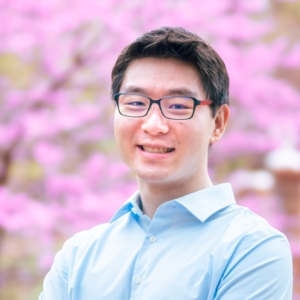 Siyang Li
Siyang Li
Ph.D., Astronomy & Astrophysics, Johns Hopkins University
Host Institution: University of California, Berkeley, Department of Astronomy
Year Awarded: 2025
Project Title: Refining a New Standard Candle to Independently Probe the Hubble Tension
Siyang Li studies the present expansion rate of our universe, parameterized by the Hubble constant (H0), to investigate the Hubble Tension. The Hubble Tension is a sizable discrepancy between measurements of H0 using information from the early and late universe and suggests a need to identify significantly underestimated uncertainties, or revise the canonical model of our universe; either class of solutions would have profound impacts on the field as they would require shifts in our understanding of these respective phenomena at the level of several standard deviations. One powerful way to probe systematic uncertainties in the Hubble Tension is to develop and use independent ways to measure H0. As a PhD student at Johns Hopkins, Li worked on refining tools that can be used to measure H0, including the tip of the red giant branch and J-region Asymptotic Giant Branch (JAGB), to investigate systematic uncertainties and develop independent routes to measure H0. In particular, the JAGB is a new tool that can be used to independently measure H0; however, recent studies have shown evidence of intrinsic variations that still need to be investigated before they can be used to robustly crosscheck H0. As a Brinson Prize Fellow, Li will perform extensive characterizations of the stars used for the JAGB method using both ground- and space-based telescopes to investigate and improve this technique and probe the origins of the Hubble Tension.
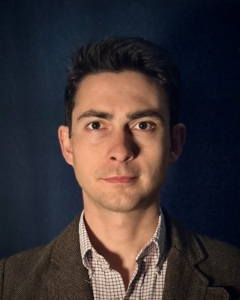 John Weaver
John Weaver
Ph.D., Astrophysics, University of Copenhagen
Postdoctoral Research Associate, University of Massachusetts Amherst
Host Institution: Massachusetts Institute of Technology (MIT), Kavli Institute (MKI)
Year Awarded: 2025
Project Title: Resolving the Galaxy Crisis at Cosmic Dawn
John Weaver studies how the first galaxies grew and assembled, setting the stage for the rest of cosmic history. He uses the largest telescopes to map out galaxies in space and time and then studies the most extreme among them with detailed spectroscopy. Weaver has led a number of high-profile galaxy catalog teams including COSMOS2020 and UNCOVER, as well as serving as the Principal Investigator of one of the deepest JWST spectroscopic surveys of early bright galaxies. As a Brinson Prize Fellow, his work will focus on ESA’s Euclid Mission, a wide-field near-infrared telescope that is surveying vast regions of our Universe. He will identify the most luminous galaxies stretching back to the Big Bang with unprecedented statistical power, placing fundamentally new constraints on cosmological models. Unsatisfied with purely statistical insights, Weaver will use spectroscopy to identify the tell-tale signature of primordial stars and active black holes in these remarkable cosmic beasts.
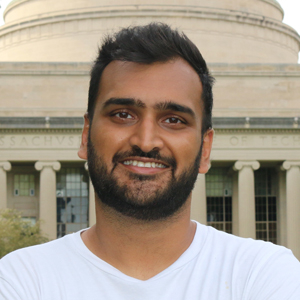 Anirudh (Ani) Chiti
Anirudh (Ani) Chiti
Ph.D., Physics, Massachusetts Institute of Technology
Brinson Postdoctoral Fellow, University of Chicago
Host Institution: University of Chicago, Kavli Institute for Cosmological Physics (KICP) (Year One), Stanford University, Kavli Institute for Particle Astrophysics and Cosmology (KIPAC) (Years Two and Three)
Year Awarded: 2024
Project Title: Uncovering the Ancient Milky Way
Ani Chiti studies how the earliest elements, stars, and galaxies evolved in the first billion years of the universe. He performs this research by identifying, mapping, and investigating the chemical composition of nearby ancient stars and galaxies, in an approach known as Galactic Archaeology. As a Brinson Prize Fellow, he is leading a large imaging program with a newly installed imaging filter on the Dark Energy Camera. This program will allow the identification of ancient stars in our Galaxy over a quarter of the southern sky, to map the distribution of ancient stars in the Milky Way and the neighboring Magellanic Clouds. This unique dataset will enable targeted studies of the composition of these stars to trace the early chemical enrichment of the local universe by the first stars, the identification of substructures of ancient stars in our Galaxy to trace its formation, and the discovery of ancient stars in the outskirts of the smallest galaxies to potentially probe the distribution of dark matter that they inhabit. He anticipates scaling several of these analysis techniques to data from the next-generation Rubin/LSST imaging survey.
 Nathaniel Starkman
Nathaniel Starkman
Ph.D., Astrophysics, University of Toronto
Host Institution: Massachusetts Institute of Technology (MIT), Kavli Institute (MKI)
Year Awarded: 2024
Project Title: Charting the Dark Matter with Extragalactic Streams & Machine Learning
Nathaniel Starkman studies the dynamics of star clusters orbiting galaxies to understand the distribution and nature of dark matter. When an orbiting group of stars is torn apart by its host galaxy’s gravity, the group’s debris forms long structures called stellar streams that are exquisitely sensitive to the gravity of the galaxy. Since much of this gravity is sourced by the dark matter, by studying stellar streams we can map the dark matter in a galaxy. As a Ph.D. candidate at the University of Toronto, Starkman extended the detected lengths of stellar streams, developed cutting edge machine learning algorithms to characterize and model stellar streams, and refined models of the dark matter in the Milky Way. In addition, Starkman constrained models of exotic dark matter and found new ways to study the earliest light in the universe. As a Brinson Prize Fellow at the Massachusetts Institute of Technology, Starkman will extend his stellar stream research beyond the Milky Way to a cosmological context, characterizing stellar streams of distant galaxies to map their dark matter. Combining his cutting-edge methods with forthcoming datasets from Rubin Observatory, Starkman will map thousands of stellar streams and galactic dark matter distributions and test cosmological theories of the nature of dark matter and the formation of galaxies.
 James Sullivan
James Sullivan
Ph.D., Astrophysics, University of California, Berkeley
Host Institution: Massachusetts Institute of Technology (MIT), Center for Theoretical Physics
Year Awarded: 2024
Project Title: Galaxies Remember Inflation: Early Universe Physics with Redshift Surveys
Jamie Sullivan studies the large-scale structure of the Universe, and how observational probes of this structure inform fundamental physics. He works to understand the formation of large-scale structure and how observed galaxies trace it through both analytical and numerical techniques. As a Ph.D. student, Department of Energy Computational Sciences Graduate Fellow, and Office of Science Graduate Student Researcher at the University of California, Berkeley, Jamie developed methods for more optimally extracting information from cosmological galaxy survey summary statistics. Currently, his research is oriented toward answering questions about the earliest moments of the Universe—those that are well-modeled by cosmic inflation. As a Brinson Prize Fellow at the MIT Center for Theoretical Physics, Jamie will build tools for learning more about the early Universe from galaxy surveys and apply these tools to upcoming observational data, including from space-based observatories.
 Daniel Gilman
Daniel Gilman
Ph.D., Physics, University of California, Los Angeles (UCLA)
Postdoctoral Scholar, University of Toronto
Schmidt AI in Science Fellow, University of Toronto
Host Institution: University of Chicago, Department of Astronomy and Astrophysics
Year Awarded: 2023
Project Title: Detecting Concentrations of Dark Matter around Distant Galaxies Using Gravitational Lensing
Daniel Gilman strives to understand the nature of dark matter, an enigmatic substance of unknown origin and particle properties. The force of gravity mediates the only known connection between dark matter and the small fraction of the Universe we can observe and interact with. In his research, Gilman uses the gravitational connection between light and dark matter through an effect called gravitational lensing in which light is deflected by gravitational fields. In a particular case referred to as strong lensing, a foreground galaxy and the dark matter surrounding it bend light from a distant background source in such a way that the source becomes highly magnified and multiply imaged. As a Ph.D. student at UCLA, Gilman led the development of an analysis framework to test theories of dark matter by simulating a particular kind of strong lens system referred to as a quadruply-imaged quasar. As a postdoc at the University of Toronto, he and his collaborators expanded this analysis pipeline to simulate how strong lenses would appear in a variety of dark matter theories with unique particle physics predictions. As a Brinson Prize Fellow at the University of Chicago, Gilman is refining the analysis techniques he developed to incorporate additional information from spectacular, highly-magnified lensed arcs that often encircle the main deflector in a strong lens system. Combining the new analysis techniques with forthcoming data from the James Webb Space Telescope, Gilman performs stringent tests of the concordance cosmological model of cold dark matter and explores alternative hypotheses for the nature of dark matter that, if confirmed, would overthrow cold dark matter and require new physics.
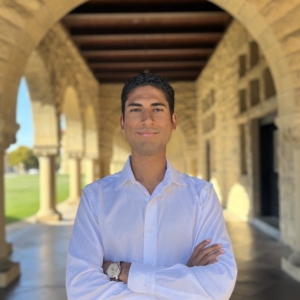 Justin Myles
Justin Myles
Ph.D., Physics, Stanford University
Host Institution: Princeton University, Department of Astrophysical Sciences
Year Awarded: 2023
Project Title: Combining Large Galaxy Survey Datasets to Stress-test and Refine Cosmological Models
Justin Myles studies observations of galaxies and clusters of galaxies to test models of the past and future development of the Universe. As an observer, Myles combines multiple forms of data ranging from visible light to X-rays to better understand galaxies and the hot clouds of gas they inhabit. In his Ph. D. work at Stanford University, he developed ways to use spectroscopic observations of galaxies to improve measurements of weak gravitational lensing and of galaxy clusters. As a Brinson Prize Fellow, Myles explores questions including, “How can we achieve competitive precision on cosmological parameters from galaxy clusters identified in imaging surveys?” “How can we design efficient follow-up observing campaigns to maximize the utility of large cosmology surveys?” and most broadly, “How can we improve the modeling of galaxy survey data?” His research sits at the interface of survey astronomy based on observations of large swaths of the sky and designing targeted observations to resolve challenges that emerge from survey data.
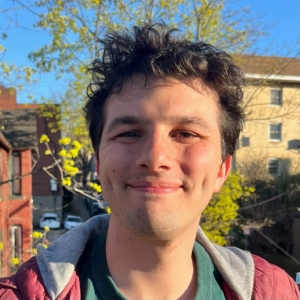 David Setton
David Setton
Ph.D., Physics, University of Pittsburgh
Host Institution: Princeton University, Department of Astrophysical Sciences
Year Awarded: 2023
Project Title: Unlocking the Infrared Universe: Massive Galaxy Quenching and Strange Little Red Dots with JWST and ALMA
David Setton’s research focuses on constraining the physical process that causes the most massive galaxies in the Universe to stop making new stars. He does this by looking to great distances with some of the world’s largest observatories to study galaxies right after they finished their last epoch of star formation, catching them in the act of “quenching.” David uses multi-wavelength observing facilities to study the physical properties of the stars, gas, and supermassive black holes in these galaxies. In his Ph.D. work at the University of Pittsburgh, David measured the structures of “post-starburst” galaxies from the SQuIGGLE sample and used spectra from the Dark Energy Spectroscopic Instrument Survey to trace the cosmic evolution in the fraction of quenching galaxies. As a Brinson Prize Fellow at Princeton University, David extends this work using novel samples from the Prime Focus Spectrograph Survey, using the novel instrument on the Subaru telescope to identify and characterize the population of quenching galaxies during the peak of the star formation history of the Universe.
